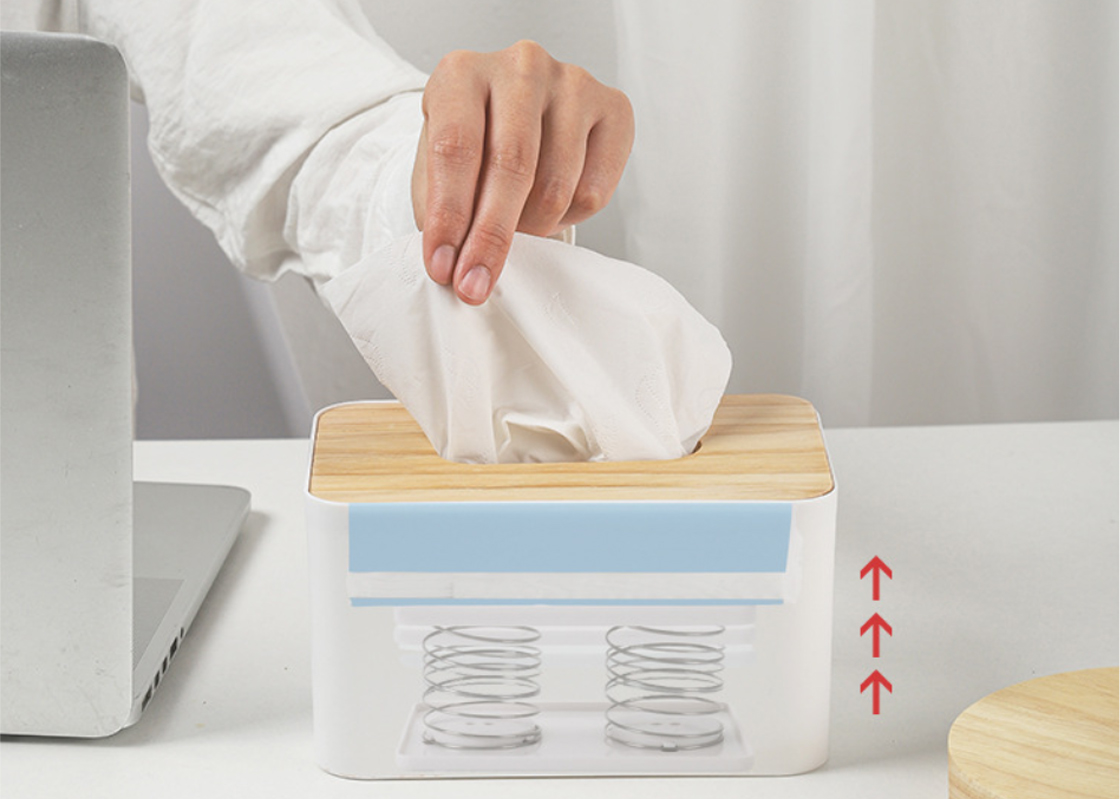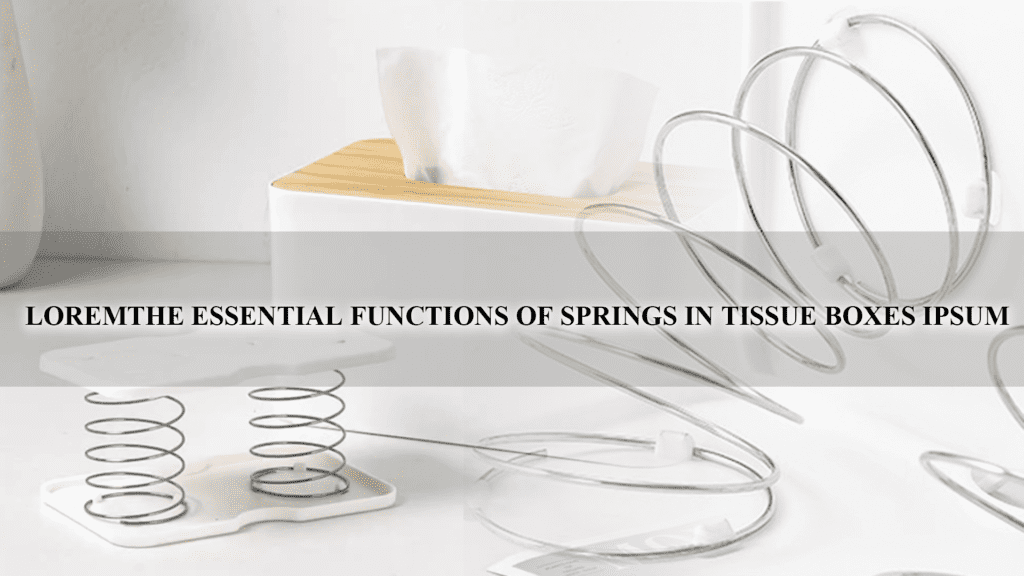
Springs in tissue boxes are not just simple components; they are integral to enhancing the overall user experience. Let’s explore their pivotal roles in detail:
1. Maintaining Tension for Easy Dispensing
Springs diligently maintain constant tension on tissue stacks, delicately pushing them upwards with each tissue removal. This ensures that the next tissue remains readily available for easy dispensing, allowing users to effortlessly retrieve one tissue at a time without the need to delve deep into the box.
2. Stabilizing the Tissue Stack
Additionally, springs serve as robust stabilizers for tissue stacks, effectively preventing collapse or misalignment within the box. This critical function ensures that tissues dispense one at a time, significantly reducing the likelihood of multiple tissues being unintentionally pulled out together, thereby promoting a seamless user experience.
3. Compensating for Depletion
Moreover, as tissues are consumed and the stack diminishes, springs continue their dedicated effort to push the remaining tissues upwards. This ensures that the top tissue remains easily accessible, irrespective of the number of tissues remaining in the box, thereby prolonging the usability of the tissue box.
4. Ensuring Consistent Dispensing Pressure
Furthermore, springs provide consistent upward pressure on tissues, meticulously maintaining a steady dispensing force even as the tissue count decreases. This ensures that users consistently experience ease of tissue removal throughout the lifespan of the tissue box, contributing to overall user satisfaction.
5. Reducing Waste and Improving Efficiency
Last but not least, by keeping tissues aligned and dispensing them one at a time, springs remarkably minimize wastage and inadvertent pulling of multiple tissues. This not only reduces waste but also ensures efficient tissue usage, ultimately enhancing user satisfaction and optimizing resource utilization.
Key Benefits of Tissue Box Springs
- Enhanced User Convenience: Springs facilitate quick and effortless tissue retrieval, enhancing user convenience and satisfaction.
- Improved Operational Efficiency: By maintaining consistent dispensing pressure and minimizing wastage, springs contribute to the efficient operation of tissue boxes.
- Durability and Longevity: Utilizing high-quality materials ensures the durability and longevity of springs, prolonging the lifespan of tissue boxes and reducing maintenance requirements.
In conclusion, the functions performed by springs in tissue boxes are vital for ensuring an optimal user experience. Their ability to maintain tension, stabilize tissue stacks, compensate for depletion, ensure consistent dispensing pressure, and reduce wastage underscores their indispensable role in the functionality of tissue dispensing systems. Incorporating high-quality springs in tissue box designs is essential for maximizing user satisfaction and operational efficiency.

